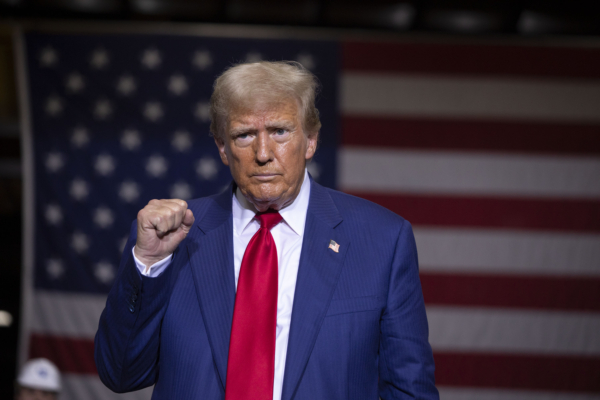On October 18, 2024, both Vice President Harris and former President Trump made their way to Michigan, one of the “Blue Wall States,” in an effort to secure victory in this crucial political battleground.
The term “Blue Wall States” refers to 18 states in the United States (including the District of Columbia) as identified by political experts. These states include California, Connecticut, Delaware, the District of Columbia, Hawaii, Illinois, Maine, Maryland, Michigan, Minnesota, New Jersey, New York, Oregon, Pennsylvania, Rhode Island, Vermont, Washington, and Wisconsin. Among them, California is the largest state with 54 electoral votes, followed by New York with 28.
From 1992 to 2012, the Democratic Party consistently won the electoral votes in these regions during each presidential election.
Michigan, Wisconsin, and Pennsylvania are key battleground states for both parties in the 2024 election. These three states shifted to the Republican Party in 2016, supporting Trump, but Biden managed to regain them in 2020.
Vice President Harris started her day in Grand Rapids, holding a rally with other Democratic leaders, then headed to Lansing, the state capital, to address a speech at a United Auto Workers (UAW) hall, promoting the White House’s record of supporting domestic automobile manufacturing.
Her final event of the day was a rally in Oakland County in the northwest of Detroit.
Former President Trump held his own event in Oakland County in the afternoon and a rally in Detroit in the evening. During a rally in Detroit last week, Trump warned that if Harris is elected, “our entire country will end up like Detroit.”
The city has faced continuous population and business loss over the years, leading to severe financial issues.
One challenge Harris faces in Michigan is gaining the support of labor unions. While unions traditionally lean towards the Democratic Party, she has failed to secure support from some key union groups. The International Association of Firefighters and the International Brotherhood of Teamsters have both stated they refuse to endorse any candidate. The International Brotherhood of Teamsters mentioned that Harris did not secure a majority of support among their over one million members.
Any divisions within the labor movement could pose a setback to the Democratic Party, as they have been working to regain the position of unions as a core source of strength at the ballot box.
In Michigan, non-white voters overwhelmingly supported Biden with 80% of the vote, and non-white voters make up 16% of the total electorate in the state. However, recent signs of alliance fracture have emerged, particularly among Arab Americans in the Detroit metropolitan area, as many are expected to withdraw their support for the Democratic Party due to the Biden administration’s handling of the Israel-Hamas conflict.
Michigan Governor Gretchen Whitmer, the co-chair of Harris’s campaign activities, mentioned in an interview on Thursday that people have always believed “this election (vote count on both sides) will be very close.”
She stated, “Haven’t you heard for decades? Michigan is a divided state, which is why we can’t erase the reddest areas from the political map.”
Kent County, where Harris began her campaign on Friday, has traditionally been a Republican stronghold. Trump won with a narrow 3% margin in 2016, but Biden secured the county in 2020, and there has been an increasing number of voters shifting towards the Democratic Party.
(The article referenced reports from the Associated Press)

